- Home
- Julian Barnes
Pulse Page 16
Pulse Read online
Page 16
M— commenced his treatment on 20th January 177–. An external examination confirmed that Maria Theresia’s eyes showed severe malformation: they were quite out of their normal alignment, grossly swollen and extruded. Internally, the girl seemed to be at a pitch where the passing phases of hysteria might lead to chronic derangement. Given that she had suffered fourteen years of disappointed hope, and fourteen years of unremitting blindness, this was not an unreasonable response from a young body and mind. M— therefore began by emphasising again how different his procedure was from all others; how it was not a matter of order being reimposed by external violence, but rather of a collaboration between doctor and patient, aimed at re-establishing the natural alignment of the body. M— talked generally; in his experience it did not help for the patient to be constantly aware of what was to be expected. He did not speak of the crisis he hoped to provoke, or predict the extent of the cure he envisioned. Even to the girl’s parents, he expressed only the humble ambition of alleviating the gross ocular extrusion.
He explained his initial actions carefully, so they would come as no surprise. Then he addressed the loci of sensitivity on Maria Theresia’s head. He placed his hands, formed into cups, around her ears; he stroked her skull from the base of the neck to the forehead; he placed his thumbs on her cheeks, just below the eyes, and made circular motions around the affected orbs. Then he gently laid his stick, or wand, on each eyebrow. As he did so, he quietly encouraged Maria Theresia to report any changes or movements she experienced within her. Then he placed a magnet on each temple. Immediately, he felt a sudden sensation of heat upon her cheeks, which the girl confirmed; he also observed a redness in the skin and a trembling of the limbs. She then described a gathering force at the base of her neck which was compelling her head backwards and upwards. As these movements occurred, M— noted that the spasms in her eyes were more marked and at times convulsive. Then, as this brief crisis came to its end, the redness left her cheeks, her head resumed its normal position, the trembling ceased, and it appeared to M— that her eyes were in a better alignment, and also less swollen.
He repeated the procedure each day at the same time, and each day the brief crisis led to an evident improvement, until by the end of the fourth day the proper alignment of her eyes had returned and no extrusion was to be remarked. The left eye appeared to be smaller than the right, but as the treatment continued, their sizes began to balance. The girl’s parents were amazed: M—’s promise had been fulfilled, and their daughter no longer showed the deformity which might alarm those who watched her play. M—, however, was already preoccupied with the patient’s internal condition, which he judged to be moving towards the necessary crisis. As he continued his daily procedures, she reported the presence of sharp pains in the occiput which penetrated the whole of her head. The pain then followed the optic nerve, producing constant pinpricks as it travelled and multiplied across the retina. These symptoms were accompanied by nervous jerkings of the head.
For many years, Maria Theresia had lost all sense of smell, and her nose produced no mucus. Now, suddenly, there was a visible swelling of the nasal passages, and a forceful discharge of green, viscous matter. Shortly afterwards, to the patient’s further embarrassment, there were additional discharges, this time in the form of copious diarrhoea. The pains in her eyes continued, and she reported feelings of vertigo. M— recognised that she was at a time of maximum vulnerability. A crisis was never a neutral occurrence: it might be benign or malign – not in its nature, but in its consequences, leading either to progress or regress. He therefore proposed to the girl’s parents that she take up residence for a short period at 261 Landstrasse. She would be looked after by M—’s wife, though she could bring her own maid if necessary. There were already two young female patients established in the household, so questions of decorum need not arise. This new plan was swiftly agreed.
On Maria Theresia’s second day in the house, and still in the presence of her father, M—, after touching her face and skull as before, placed the patient in front of a mirror. Taking his wand, he pointed it at her reflection. Then, as he moved the wand, the girl’s head slightly turned, as if following its movements in the glass. M—, sensing that Herr von P— was about to give tongue to his astonishment, quieted him with a gesture.
‘You are aware that you are moving your head?’
‘I am.’
‘Is there a reason why you are moving your head?’
‘It is as if I am following something.’
‘Is it a noise that you are following?’
‘No, not a noise.’
‘Is it a smell that you are following?’
‘I still have no sense of smell. I am merely … following. That is all I can say.’
‘It is enough.’
M— assured Herr von P— that his house would always be open to him and his wife, but that he expected progress in the ensuing days to be slow. In truth, he judged the girl’s cure more likely if he could treat her without the presence of a father who struck him as overbearing, and a mother who, perhaps by reason of her Italian blood, seemed liable to hysteria. It was still just possible that Maria Theresia’s blindness was caused by atrophy of the optic nerve, in which case there was nothing that magnetism, or any other known procedure, could do for her. But M— doubted this. The convulsions he had witnessed, and the symptoms reported, all spoke of a disturbance to the whole nervous system due to some powerful shock. In the absence of any witnesses at the time, or of the patient’s memory, it was impossible to determine what kind of shock it might have been. This did not perturb M— unduly: it was the effect he was treating, not the cause. Indeed, it might be fortunate that the Fräulein could not recall the precise nature of the precipitating event.
In the preceding two years, it had become increasingly apparent to M— that in bringing the patient to the necessary point of crisis, the touch of the human hand was of central, animating importance. At first, his touching of the patient at the moment of magnetism was designed to be calming, or at best emphatic. If, for instance, magnets were placed on either side of the ear, it seemed a natural gesture to stroke that ear in a manner confirming the realignment being sought. But M— could not help observing that when all favourable conditions for cure had been created, with a circle of patients around the baquet in the soft candlelight, it was often the case that when he, as a musician, removed his fingers from the rotating glass armonica and then, as a physician, laid them on the afflicted part of the body, the patient might be instantly brought to crisis. M— was at times inclined to ponder how much was the effect of the magnetism, and how much that of the magnetiser himself. Maria Theresia was not apprised of such wider considerations, any more than she was asked to join other patients around the oaken tub.
‘Your treatment causes pain.’
‘No. What is causing pain is that you are beginning to see. When you look in the mirror you see the wand I am holding and turn your head to follow it. You say yourself that there is a shape moving.’
‘But you are treating me. And I am feeling pain.’
‘The pain is a sign of a beneficial response to the crisis. The pain shows that your optic nerve and retina, so long abandoned from use, are becoming active again.’
‘Other doctors have told me that the pain they were inflicting was necessary and beneficial. You are a doctor of philosophy as well?’
‘I am.’
‘Philosophers can explain anything away.’
M— took no offence, indeed was pleased with such an attitude.
Such was the girl’s new susceptibility to light that he had to bind her eyes with a triple bandage, which remained in place at all times when she was not being treated. He had begun by presenting to her, at a certain distance, objects of the same kind which were either white or black. She was able to perceive the black objects without distress, but flinched at the white objects, reporting that the pain they produced in her eyes was like that of a soft brush being drawn across
the retina; they also provoked a sense of giddiness. M— therefore removed all the white objects.
Next, he introduced her to the intermediate colours. Maria Theresia was able to distinguish between them, though unable to describe how they appeared to her – except for the colour black, which was, she said, the picture of her former blindness. When the colours were ascribed their names, she often failed to apply the correct name the next time a colour was shown. Nor was she able to calculate the distance objects were from her, imagining them all to be within reach; thus she extended her hands to pick up items twenty feet away. It was also the case, in these early days, that the impression an object left upon her retina lasted for up to a minute. She was obliged, therefore, to cover her eyes with her hands until the impression faded, else it would become confused with the next object presented to her view. Further, since the muscles of the eye had fallen into disuse, she had no practice at moving her gaze, searching for objects, focusing upon them and accounting for their position.
Neither was it the case that the elation felt by both M— and the girl’s parents when she first began to perceive light and forms was shared by the patient herself. What had come into her life was not, as she had expected, a panorama of the world so long concealed from her, and so long described by others; still less was there an understanding of that world. Instead, a greater confusion was now heaped upon the confusion that already existed – a state exacerbated by the ocular pains and feelings of vertigo. The melancholia that was the obverse of her natural cheerfulness came much to the fore at this time.
Understanding this, M— resolved to slow the pace of his treatment; also, to make the hours of leisure and rest as pleasant as possible. He encouraged intimacy with the other two young women living in the household: Fräulein Ossine, the eighteen-year-old daughter of an army officer, who suffered from purulent phthisis and irritable melancholia; and the nineteen-year-old Zwelferine, struck blind at the age of two, whom M— had found in an orphanage and was treating at his own expense. Each had something in common with one of the others: Maria Theresia and Fräulein Ossine were both of good family and imperial pension-holders; Maria Theresia and Zwelferine were both blind; Zwelferine and Fräulein Ossine were both given to the periodic vomiting of blood.
Such company was a useful distraction; but M— believed that Maria Theresia also needed several hours in the day devoted to a peaceful and familiar routine. He therefore took to sitting with her, talking of subjects far from her immediate concern, and reading to her from his library. Sometimes they would play music together, she with bandaged eyes at the klavier, he on the violoncello.
He also used this time to know the girl better, to assess her truthfulness, her memory, and her temperament. He noted that even when her spirits ran high, she was never headstrong; she showed neither the arrogance of her father nor the wilfulness of her mother.
He might ask, ‘What would you like to do this afternoon?’
And she would reply, ‘What do you propose?’
Or he might ask, ‘What would you like to play?’
And she would reply, ‘What would you like me to play?’
When such courtesies were finished with, he discovered that she had clear opinions, arrived at through the use of reason. But he also concluded that, even beyond the normal obedience of children, Maria Theresia was accustomed to doing as she was instructed: by her parents, her teachers, her doctors. She played beautifully, with a fine memory, and it seemed to M— that it was only when she was at the klavier, immersed in a piece familiar to her, that she truly felt free, and allowed herself to be playful, expressive, thoughtful. It struck him, as he watched her profile, her bandaged eyes, and her firm, upright posture, that his enterprise was not without some danger. Was it possible that her talent, and the pleasure she evidently took in it, might be tied to her blindness in a way he could not fully understand? And then, as he followed her hands moving in their practised, easy manner, sometimes strong and springy, at others as leisurely as ferns wafted by a breeze, he found himself wondering how the first sight of a keyboard might affect her. Might the white keys throw her into turmoil, the black ones remind her only of blindness?
Their daily work continued. So far, Maria Theresia had been presented with a mere sequence of static objects: his concern had been to establish and accustom her to shape, colour, location, distance. Now he decided to introduce the concept of movement, and with it the reality of a human face. Though she was well used to M—’s voice, he had so far always kept out of her lines of perception. Gently, he undid the bandages, asking her immediately to cover her eyes with her hands. Then he came round to face her, placing himself at a distance of a few feet. Telling her to take away her hands, he began slowly turning his head from one profile through to its opposite.
She laughed. And then placed the hands she had removed from her eyes over her mouth. M—’s excitement as a physician overcame his vanity as a man that he should provoke such a reaction in her. Then she took her hands from her mouth, placed them over her eyes, and after a few seconds released them and looked at him again. And laughed again.
‘What is that?’ she asked, pointing.
‘This?’
‘Yes, that.’ She was giggling to herself in a manner which, in other circumstances, he would have judged uncivil.
‘It is a nose.’
‘It is ridiculous.’
‘You are the only person cruel enough to have made that observation,’ he said, pretending to be piqued. ‘Others have found it acceptable, even agreeable.’
‘Are all … noses like that?’
‘There are differences, but, charming Fräulein, I must warn you that this is by no means anything out of the ordinary, as far as noses go.’
‘Then I shall have much cause for laughter. I must tell Zwelferine about noses.’
He decided on an additional experiment. Maria Theresia had always enjoyed the presence, and the affection, of the house dog, a large, amiable beast of uncertain species. Now M— went to the curtained door, opened it slightly, and whistled.
Twenty seconds later, Maria Theresia was saying, ‘Oh, a dog is a much more pleasing sight than a man.’
‘You are, sadly, not alone in that opinion.’
There followed a period when her improving sight led to greater cheerfulness, while her clumsiness and error in the face of this newly discovered world drew her down into melancholy. One evening M— took her outside into the darkened garden and suggested that she tip her head backwards. That night the heavens were blazing. M— briefly found himself thinking: black and white again, though happily much more black than white. But Maria Theresia’s reaction took any anxiety away. She stood there in astonishment, head back, mouth open, turning from time to time, pointing, not saying a word. She ignored his offer to identify the constellations; she did not want words to interfere with her sense of wonder, and continued looking until her neck hurt. From that evening on, visual phenomena of any distinction were automatically compared to a starry sky – and found wanting.
Though each morning M— continued his treatment in exactly the same way, he now did so with a kind of feigned concentration. Within himself he was debating between two lines of thought, and between two parts of his intellectual formation. The doctor of philosophy argued that the universal element which underlay everything had surely now been laid bare in the form of magnetism. The doctor of medicine argued that magnetism had less to do with the patient’s progress than the power of touch, and that even the laying on of hands was merely emblematic, as was the application of magnets and of the wand. What was actually happening was some collaboration or complicity between physician and patient, so that his presence and authority were permitting the patient to cure herself. He did not mention this second explanation to anyone, least of all the patient.
Maria Theresia’s parents were as astonished by the further improvement in their daughter as she was by the starry heavens. As the news spread, friends and well-wishers began to tur
n up at 261 Landstrasse to witness the miracle. Passers-by often lingered outside the house, hoping to glimpse the famous patient; while letters requesting her physician’s attendance at sickbeds across the city arrived each day. At first M— was happy to allow Maria Theresia to demonstrate her ability to distinguish colours and shapes, even if some of her naming was not yet faultless. But such performances palpably tired her, and he severely restricted the number of visitors. This sudden ruling had the effect of increasing both the rumours of miracle-working and the suspicions harboured by some fellow members of the Faculty of Medicine. The case was also beginning to make the Church uneasy, since the popular understanding was that M— had only to touch the afflicted part of a sick person for the sickness to be healed. That anyone other than Jesus Christ might effect a cure by the laying on of hands struck many of the clergy as blasphemous.
M— was aware of these rumours, but felt confident in the backing of Professor Stoerk, who had come to 261 Landstrasse and been officially impressed by the working of the new cure. What then did it matter if other members of the Faculty muttered against him, or even dropped the slander that his patient’s new-found ability to name colours and objects was in fact due to close training? The conservative, the slowwitted and the envious existed in every profession. In the longer term, once M—’s methods were understood and the number of cures increased, all men of reason would be obliged to believe him.
One day when Maria Theresia’s state of mind was at its calmest, M— invited her parents to attend him that afternoon. He then proposed to his patient that she take up her instrument, unaccompanied and unbandaged. She enthusiastically agreed, and the four of them proceeded to the music room. Chairs were set out for Herr von P— and his wife, while M— took a stool close to the klavier, the better to observe Maria Theresia’s hands, eyes and moral condition. She took several deep breaths and then, after a barely endurable pause, the first notes of a sonata by Haydn fell upon their ears.

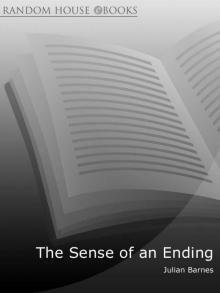 The Sense of an Ending
The Sense of an Ending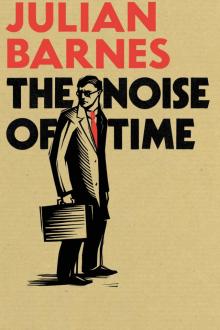 The Noise of Time
The Noise of Time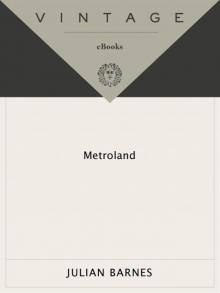 Metroland
Metroland Letters From London
Letters From London Before She Met Me
Before She Met Me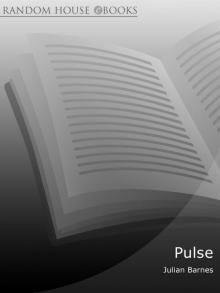 Pulse
Pulse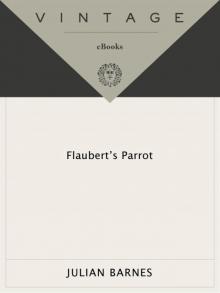 Flaubert's Parrot
Flaubert's Parrot England, England
England, England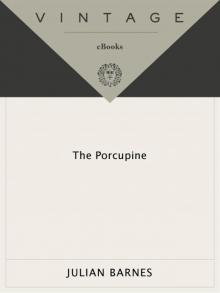 The Porcupine
The Porcupine The Only Story
The Only Story Love, Etc
Love, Etc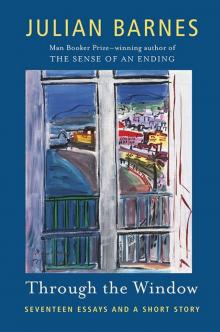 Through the Window: Seventeen Essays and a Short Story
Through the Window: Seventeen Essays and a Short Story Staring at the Sun
Staring at the Sun Cross Channel
Cross Channel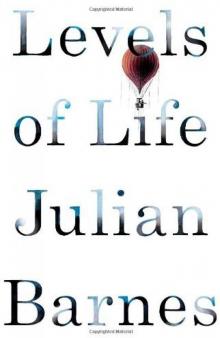 Levels of Life
Levels of Life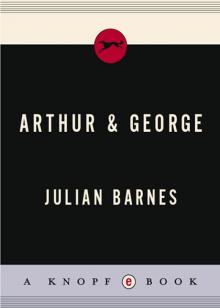 Arthur & George
Arthur & George Love, Etc.
Love, Etc. A History of the World in 10 1/2 Chapters
A History of the World in 10 1/2 Chapters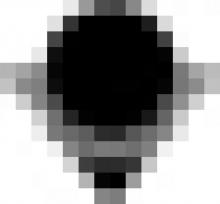 Something to Declare
Something to Declare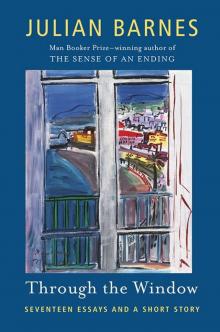 Through the Window: Seventeen Essays and a Short Story (Vintage International)
Through the Window: Seventeen Essays and a Short Story (Vintage International)